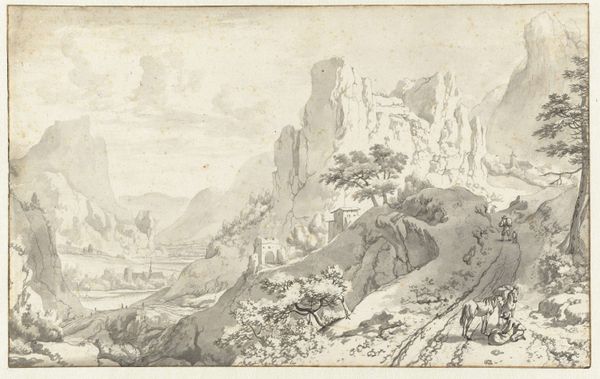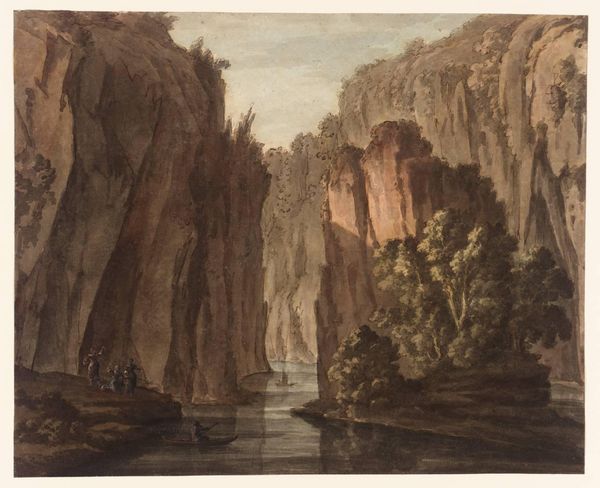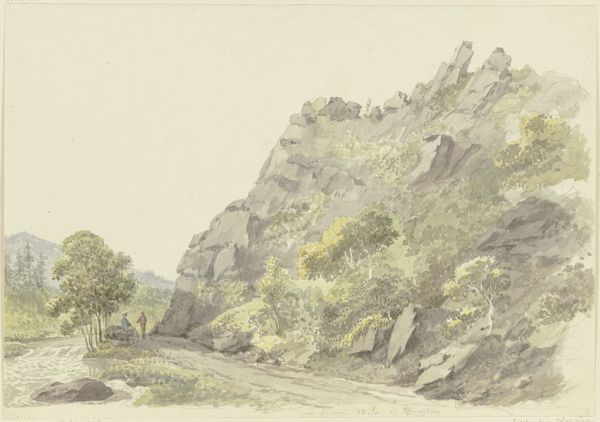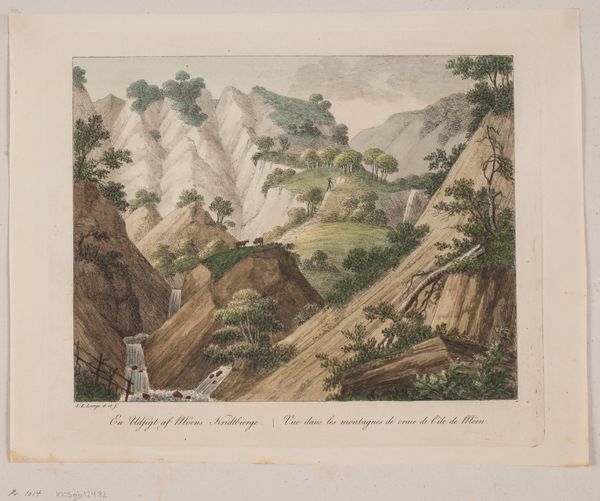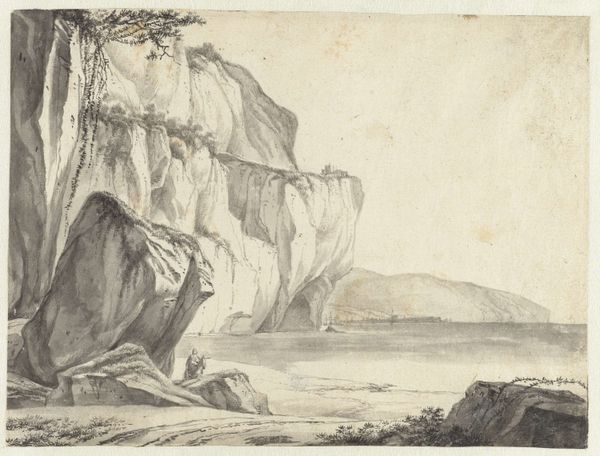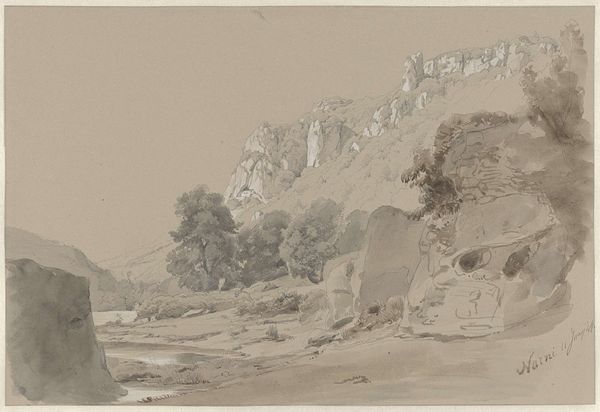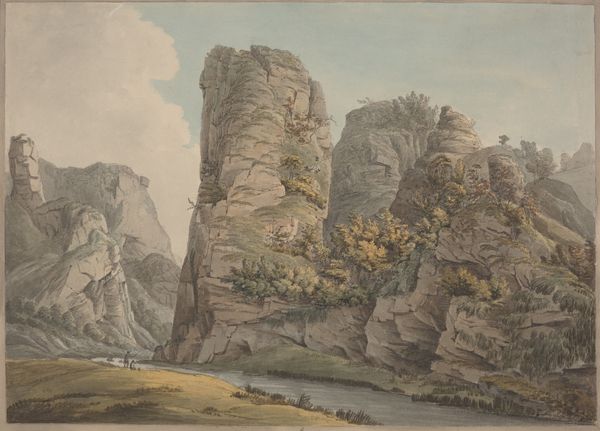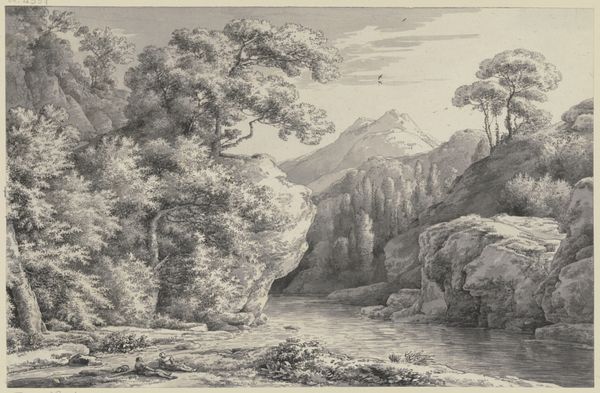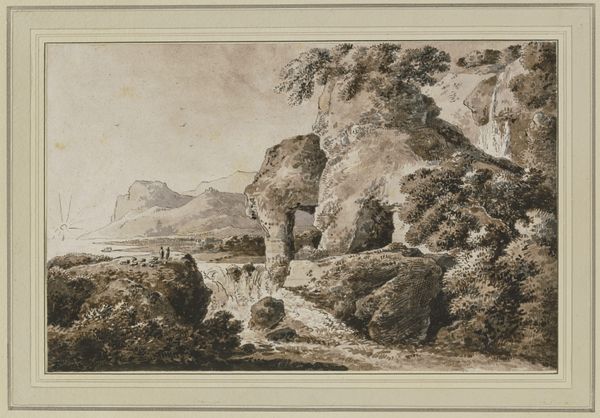
Dimensions: height 377 mm, width 468 mm
Copyright: Rijks Museum: Open Domain
Curator: This delicate watercolor before us is entitled "Buitenwand van de grot Oreille de Denys," or Exterior of the Ear of Dionysius Cave, created by Louis Ducros in 1778, now residing here at the Rijksmuseum. What strikes you about it? Editor: Its subtle palette really sets a mood, almost melancholic. The monumental rock formations rendered in gentle watercolor lend the scene a feeling of awe. Curator: It’s interesting you say melancholic, I see that too. The Ear of Dionysius itself – have you heard the story? A tyrant exploiting prisoners? It feels, in Ducros' hands, less about that spectacle and more about the feeling, a rumination on power perhaps, the natural world looming large and indifferent. Editor: Exactly. It’s less a scientific record and more an emotional landscape, if you will. Consider the visual metaphor: the cave shaped like an ear. Historically, ears are linked to stories of eavesdropping or listening to spiritual voices, echoing within the minds of the powerless. Curator: A crucial point. It speaks to the way Ducros utilizes landscape not just as background, but as a participant in human drama, even oppression. The very materiality of the watercolor – the translucence, the washes – evokes the passage of time. Editor: I'd say the strategic deployment of romanticism underscores a growing awareness of class disparities. It also resonates with contemporary discussions about structures and inequalities. It presents itself as both a beautiful vista and an enduring emblem of inequity. Curator: Absolutely. Romanticism in its subversive power. The natural world framing but also dwarfing human constructions. It seems a pointed commentary, now as then, about who is heard and who is silenced. Editor: Well, looking closer, the image persists in my mind, both as an object of beauty and a reminder of past oppressions. Curator: Yes, seeing art through a political lens sharpens its contemporary meaning and encourages us to continue addressing power imbalances. This really exemplifies how historical context gives us the tools to explore this subject matter with renewed energy.
Comments
No comments
Be the first to comment and join the conversation on the ultimate creative platform.

